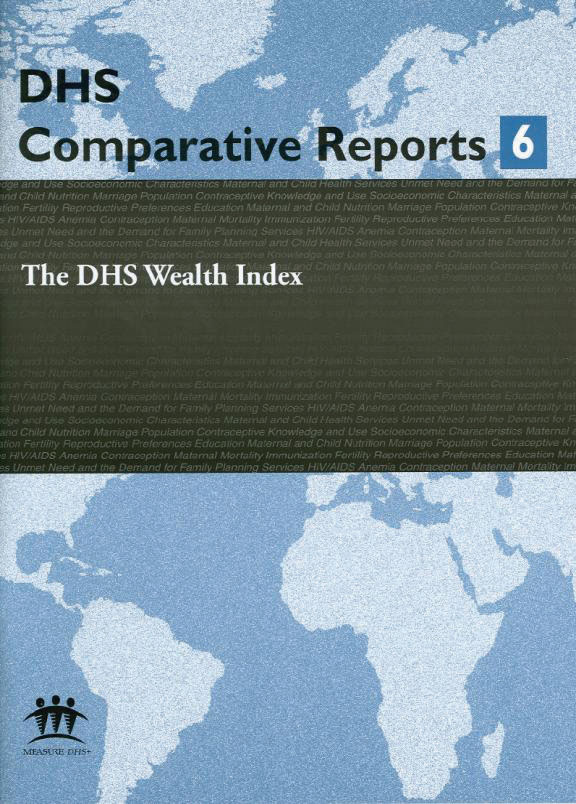- PUBLICATIONS
- JOURNAL ARTICLES
- ACCESS PUBLICATIONS
Publications Summary
- Document Type
- Comparative Reports
- Publication Topic(s)
- Household and Respondent Characteristics, Wealth/Socioeconomics
- Language
- English
- Recommended Citation
- Rutsein, Shea O. and Kiersten Johnson. 2004. The DHS Wealth Index. DHS Comparative Reports No. 6. Calverton, Maryland, USA: ORC Macro.
- Download Citation
- RIS format / Text format / Endnote format
- Publication Date
- August 2004
- Publication ID
- CR6
